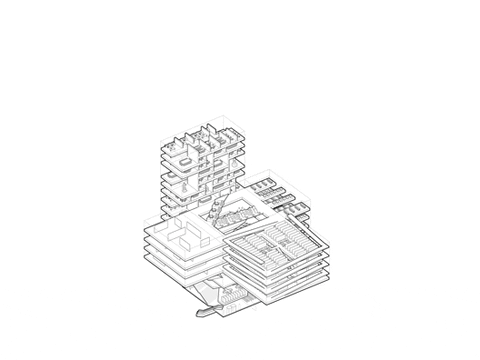Cost Segregations Pt. 2
If you have owned real estate before you are very familiar with the concept of depreciation. This allows you to have a paper loss and can give you the ability to reduce your tax bill.
When you own a rental property you can deduct the value of the property (minus land value over 27.5 years). Depreciation is the concept that a structure deteriorates over time. The government has set a time period for each type of structure. The government believes that residential structures can last 27.5 years, so the value of the “improvement” can be divided by 27.5 years, and each year can be tax-deductible. With commercial structures, the government believes that the construction standards are higher and therefore will last for longer. These buildings will depreciate over a 39 year period.
So, for example, if you have a residential improvement that is 270k and you make 75k per year. With depreciation, you would be able to claim 10k in depreciation and your income would reduce to 65k for tax purposes.

I took advantage of this from 2010-2017 but then I was ruined when I discovered how you could do a cost segregation (this is performed by a 3rd party) on the property and extract out Bonus Depreciation and in many cases take 30% of the depreciation in the first year alone.

Advanced Depreciation
Cost segregation is the process of separating and classifying construction costs according to the classifications provided in the IRS code. By separating them out there are items that have shorter timelines of depreciation than the overall blanket building of 27.5 years, therefore front-loading the amount of depreciation. Using the same example above there might be 15k of depreciation for years 1-10 and only 5k on years 17-27.5. Knowing the time value of money, having an extra 5k off our taxes now is worth a lot more than 5k in 20 years.
In short, this concept allows for us to front-load a lot of the depreciation in the investment which in turn can greatly reduce our tax bill. For many newer alternative investment investors, this can offset selling other assets to turn into a more cashflow investor or paired with the Real Estate Professional tax status to off-set even W2 Active income.

Cost Segregations in Syndications
We talk about this on every Mastermind call or with Family Office clients because every situation is unique. Although we are not CPA’s we as investors and owners need to direct our CPA’s and other professionals what we want…. if not I can refer you out to someone who gets it.
We have paid for this cost segregation many times on our deals and it typically costs $10-15k to do one therefore it only makes sense on large price properties ($1-2M property value). This is one of the many reasons why I sold off my turnkey rentals for more LP passive investments in syndications/private placements because of these tax benefits… not to mention superior diversification and scalability.
Below are a couple of documents that go more in-depth to the concepts described above.
These are some of the many common tools that we use in real estate investing that allow us to maximize the dollars that we have today in our pocket.
NOTE: We are not tax professionals and we are not giving professional tax or legal advice. But I do know that a lot of them still have JOBs. If you have specific questions about your specific scenario you should contact your CPA or Attorney or ask for a referral.

